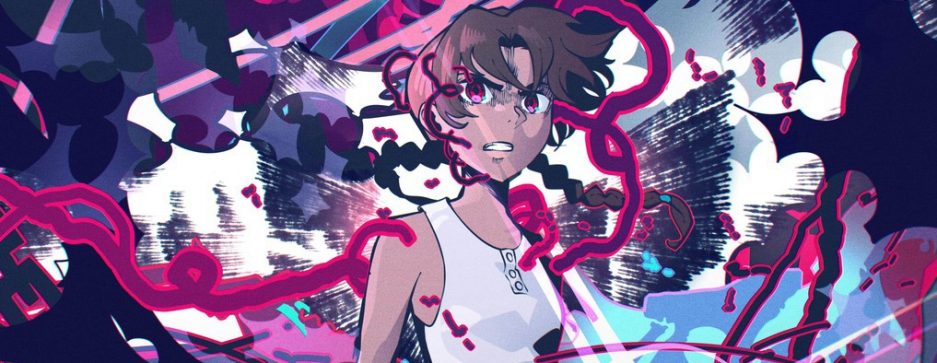Part 1 | Part 2 | Part 3 | < > | Part 5
At the conclusion of the highly disruptive BORUTO movie, the NARUTO franchise was in an undeniably awkward position. The movie depicted Naruto as an adult, long since cleared of the seemingly endless 4th Great Ninja War – a conflict that to this point had already spanned several years of television air time. The manga had also reached its end prior to the movie, meaning all that was left was to adapt the meager twenty-five remaining chapters, and then everyone involved could collectively move on with their lives. That was far from the case, however, as instead of the long-awaited conclusion, fans were met with a seemingly endless streak of filler episodes, and not of the kind where there is an interesting attempt to expand the world or characters; many of these were a genuine waste of time. When the seas finally parted after months, a light novel adaptation would take its place instead. While the Itachi Shinden novels are generally pretty well received, it seemed like this franchise was doing anything possible to not adapt the end of the manga. This, paired with the lack of transparency, naturally infuriated fans. When it finally resumed adapting the manga, nearly a calendar year after the BORUTO movie, this too was padded with original content, mostly devised by series director Hayato Date himself [1], meaning it at least better tied into the ongoing story. Still, the end had been tantalizingly in sight for so long. It is to be expected that fans might feel as if their investment was being toyed with by corporations aiming to milk every last drop of relevance the adaptation had. Their frustrations were mostly aimed at Studio Pierrot, as they often are, without realizing that Shueisha, as the IP holder, and TV Tokyo, as the broadcaster, pull the strings on the operation, forcing Pierrot into yearly contracts that are not in any way conducive to bringing such a massive adaptation to a delicate end.
Politics aside, the anime did eventually arrive at the Valley of the End in September of 2016. The much-anticipated clash between Naruto and Sasuke would be broadcast as a double-length feature, with both parts storyboarded, directed, and intimately animated by the ace animator of the franchise. In the weeks leading up to the event, some within the community were wondering if Atsushi Wakabayashi would reprise his role, having made history alongside Norio Matsumoto more than a full decade prior. That was of course not the case, and in hindsight, there should have never been any doubt. Hiroyuki Yamashita was, as ever before, the heart and soul of the NARUTO anime.
Producing two back-to-back episodes at heights close to the ceiling of what was possible for a long-running TV anime in the current year was no small task. Some advanced scheduling would have been given. However, as is the nature of ambition, their quest is such that no amount of time is ever enough. One might expect that such a large event would attract animators from around the industry in droves. While there are some notable freelancers – more on the specifics later – the episode is produced similarly to the three previous ones that Yamashita directed: that is to say, predominantly by those in close proximity to the studio, relying on young, up-and-coming talent that Yamashita personally fostered a strong connection with. This arrangement allows the general director, Yamashita in this case, more control over when and in what state certain parts of the episode will arrive ahead of inspection. Had this been a complete freelancer affair, it would have been much more difficult to coordinate his day-to-day processes. To that end, Toshiro Fujii stepped up in a big way, while Naoki Kobayashi even returned from touring feature films with Norio Matsumoto to animate part of the final clash. The star of the show, though, and part of the reason the episode didn’t outright kill Yamashita, is thanks to the burden assumed by his unquestionably greatest ally, Chengxi Huang.
The road to being a crucial contributor to the most highly anticipated episode of NARUTO was far from orthodox for the China-born Chengxi Huang. From almost as soon as he could hold a pencil, he expressed interest in becoming an animator [2], but his geographic location presented a challenge. At the time, Chinese animators did participate in anime fairly often, but it was usually in clean-up or inbetweening roles, and their involvement was almost always of the short-schedule, emergency outsourced nature, which is wholly antithetical to the idea of doing prestigious work. Freelancing through a combination of social media platforms had also yet to become popularized, and there is much that can be said about the artistic limitations of working this way anyways. Thus, to make a name for himself, his options would have been to work on Chinese anime, a completely nascent industry at the time, or move to Japan. A factor influencing this life-changing decision was NARUTO itself. Like so many others, Huang grew up a fan of the series, soaking in its artistic highs and allowing them to shape his creative process. Besides the roles Masashi Kishimoto and Tetsuya Nishio played, he cites Hiroyuki Yamashita’s Sasuke vs. Killer B scene in particular as a major eye-opening experience for him [2]. That fact makes his eventual rise to Yamashita’s most trusted collaborator all the more poetic, though this too was no simple task. Upon arriving in Japan, Huang was introduced to CANDYBOX, an outsourcing studio that had done mainly 2nd KA (clean up) for hundreds of different anime. There he would hone his skills as an animator and teach himself the Japanese language, all while working part-time jobs to support himself since paltry anime earnings aren’t nearly enough. While he potentially could have applied to more prestigious studios, he decided to stay with CANDYBOX since their owner, Zhu Xiao, regularly accepted work in bulk from the NARUTO series.
Of the first three times Chengxi Huang provided 2nd KA on NARUTO, two of them were from episodes Yamashita directed. Shortly thereafter, he debuted as a key animator on an episode with animation direction by none other than Hiroyuki Yamashita. As fate would have it, their repeated coincidental meetings eventually lead to Huang being noticed and subsequently adopted by the core staff, but not before rapidly progressing his skills as an animator. Just prior to the finale, his work on #463 was even largely mistaken for Yamashita’s by the animation enthused, and it’s easy to see why.
His development conveniently coincided with when he was needed most. Across #476 and #477, Chengxi Huang handled a whopping 70 cuts [3], which is already an impressive amount before you consider the demanding nature of most of them. His action prowess can be found closing out both halves of the finale, and also within a lengthy action scene in between. Animation is largely a team effort, and even Huang’s individual contribution would have required separate teams of inbetweeners, digital colorists, and compositing specialists before it could be appreciated in the form that we see it. So, despite the hyperfocus this piece places on Huang’s and a number of other key animators’ work, it’s worth keeping in mind that the entire team – composed of more individuals than it’s even possible to name – bent over backwards to make Yamashita’s vision a reality.
Speaking of those individual contributions, before systematically progressing through the highlights, it’s worth setting the stage for the fight itself: what it means and why both we the fans and they the artists would care. NARUTO is filled to the brim with conflicts of the physical variety. By loading any one of its seven hundred and twenty episodes, the odds are good you’ll land on one where two or more characters are fighting. So what, then, besides the high production value, makes this one in particular special enough of an event to warrant coverage to such an extent that I’m currently 1300 words into a 4800 word exploration of it? At the surface level, there are some obvious reasons, such as the fact that this is a rematch, Naruto and Sasuke having done battle in the same location a decade prior. The finality, distinguished by nearly seven hundred episodes of investment, is another. And of course, you cannot underestimate the simple, brainstem-driven amusement of the two strongest entities in the universe going head-to-head.
While there is meaning to be found in each of these, the true reason Naruto vs. Sasuke Round 2 is arguably the most meaningful fight in the series is that it represents a return to simpler times. The final stages of Masashi Kishimoto’s manga are messy – not without plenty of enjoyable stops along the way, but indeed messy. The well-reasoned structure and planning, established over years of weekly releases, begin to unravel at the dawn of the 4th Great Ninja War arc. By its conclusion, those threads are loosely scattered and seldom even recognizable. Contributing to this depreciation is the introduction of the Ōtsutsuki, a clan of ancient celestial-beings who effectively seize the focus away from Madara Uchiha, the antagonist Masashi Kishimoto had built up since the start of the time-skip many years prior. This is not to reject the inclusion of the Ōtsutsuki and the massive ramifications they retroactively had on the continuity – an argument can be easily made for their place in the story – but this direction was one that sat antithetical to what NARUTO originally began as, and importantly, what fans had grown to love.
The series never fully lost that claim to its roots; even at its darkest hour, it was still NARUTO. For as much as people like to begrudge the Kaiju action, it’s probably worth reminding them that the very first episode features a skyscraper-sized fox terrorizing a village. In combating Kaguya Ōtsutsuki, many of the creative jutsu the series is known for are present, they’re just surrounded by this larger, less intimate scale. The inane length of the 4th Great Ninja War in the anime is surely a factor as well, since over the span of two hundred episodes and half a decade of real-world time, it’s fair to say the focus was significantly diluted. All this to say, Naruto vs. Sasuke is much more than just the ideals of the two strongest characters coming to a head. More still than a respite from the odd aliens, frustrating plot twists, and green rocks (seriously, why was everything so green?). Naruto vs. Sasuke is instead the last and best chance to remind viewers why they fell in love with the series in the first place.
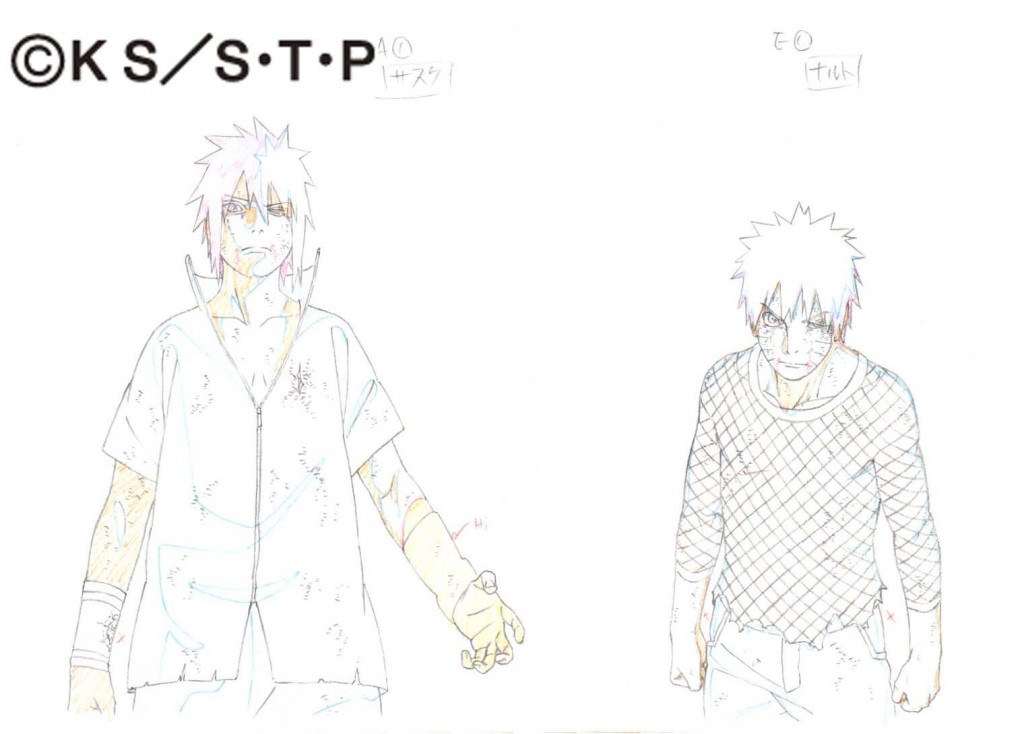
Without further ado…
The first half of the first part of the finale is a long dialogue exchange which serves to save the rest of the episode from needless intrusions. Like a sponge soaking water, these several minutes contain everything that had to be said before they start fighting, avoiding the pitfall that so many other action series fall into. The Hashirama and Madara statues they stand atop are drawn-over CGI that was lifted from the CyberConnect2 Ninja Storm video game series [4]. In the second part of my coverage of Yamashita’s career, much was made of his propensity to selectively use references and rotoscope, so it shouldn’t come as a surprise that he and his staff leaned on CGI in this part. It goes several steps further than that, however, as credited for sakuga cooperation (作画協力) across both halves are a group of individuals who offered their bodies as a reference for a select few scenes which will later be discussed at length. These are Erkin Kawabata, Katsuhiko Kitada, and Arifumi Imai. The latter has a strong connection to NARUTO, having animated one of the most mind-blowing scenes on the BORUTO movie a year prior. However, the other two are random enough that it hints another element was at play. That hidden factor would be none other than Norio Matsumoto, mentor to Yamashita, who, in one final favor, brought this small team of friends together and declined to receive any credit for it.
The action set piece which follows on the heels of the dialogue is split across the commercial break, with everything before their arms clash belonging to the manga and everything after being original. The past and present visual metaphor was beyond a staple of the series’ storytelling at this point, so it should come as no surprise that it would accompany our combatants into battle. For as often as the series was keen to lean on this metaphor, the dynamic split screen deployed by Yamashita was a first, asking a lot of the compositing department to keep the camera panning streamlined and efficient.
As mentioned, what ensues immediately after the clash is almost two minutes of dialogue-less, music-less, and entirely original action choreography from Hiroyuki Yamashita. Situations like these are what action animators daydream about, sometimes going so far as to storyboard their ideas, but rarely having the platform to bring them to life in a proper production setting. This effectively blank slate allowed Yamashita to really flex his knowledge of NARUTO’s mechanics. Sasuke borrows Naruto’s hand to complete his hand signs, while later in the sequence he can be seen disrupting his foe’s attempts to form them himself with quick jabs. The choreography in this section is purposefully modelled after a Chinese fighting style called Wing Chun. NARUTO’s history with Chinese martial arts runs deep. There is the Bruce-Rock Lee connection, of course, and even as far as The Valley of the End is concerned, Atsushi Wakabayashi and Norio Matsumoto’s original carried an homage to cult kung-fu legend Conan Lee. Therefore, Yamashita’s version is both a natural extension of the series’ roots while, at the same time, upholding its own unique flavor. As for why Wing Chun, out of all the schools of martial arts, we have to again turn to Chengxi Huang. He already had the perfect opportunity to insert this hobby of his [5] into NARUTO with this eye-grabbing anime original scene about twenty episodes prior. Although he didn’t personally animate it himself this time around, Huang lead the way in supervising the reference footage, which included help from Erkin Kawabata.
Returning to the action, Naruto finally gains some distance and summons a host of shadow clones into the mix. Suddenly, Yamashita’s creative possibilities increase exponentially (quite literally). His supervision and animation prowess can be felt in the weighty momentum transfer between the falling, real Naruto and the fodder he launches upward. Like a salvo of torpedoes, they’re dispatched in turn before one catches enough of Sasuke to throw his balance, allowing for the last one to connect and initiate the string of smeary Daisuke Tsumagari drawings that see Naruto and Sasuke meld into one. The flow throughout the action is maintained by varying the distance of the camera, mixing in close quarters cuts, distant shots, and even the odd first-person perspective of Sasuke being tag-teamed by his resilient friend. Yamashita caps off the original sequence by inventing a new, never-before-seen jutsu by taking the already-established properties of Sasuke’s Enton: Kagutsuchi, and manipulating the flames into spikes, skewering the drawn-in clones in brutal fashion.
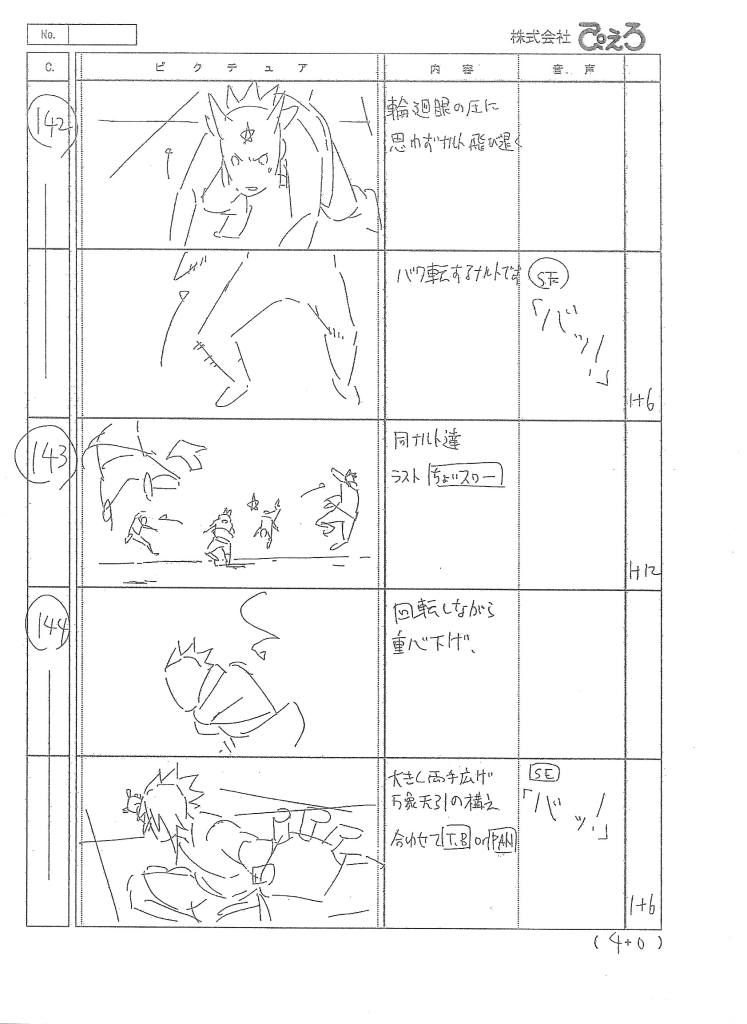
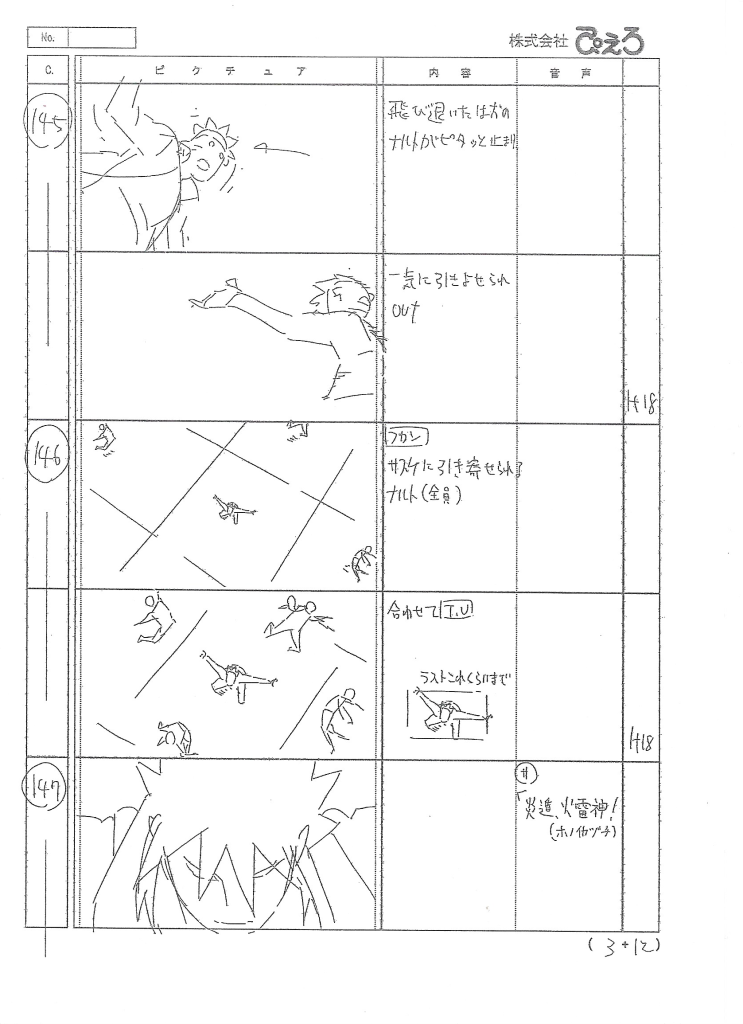

A relay team of Toshiro Fujii and Teruaki Tokumaru – two very competent action animators – assumes responsibility for the return to the adaptation of the manga. Now with Sasuke’s Susanoo and Naruto’s Sage of Six Paths mode activated, the stakes are raised to the point where hand-to-hand combat has no choice but to take a backseat for the time being.
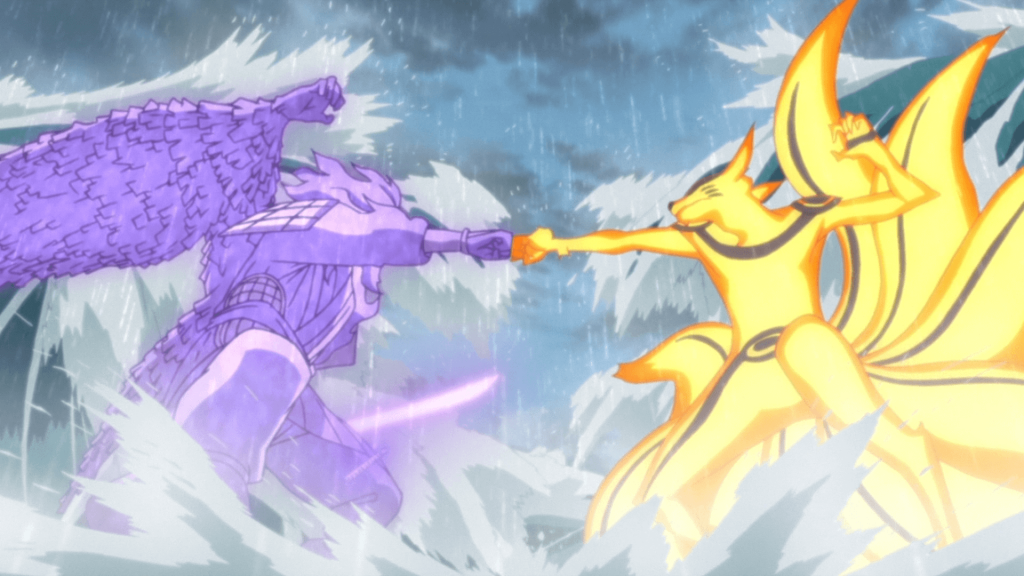
With some sentimental flashback parts scattered between, the Kaiju action bridges the gap between the two episodes. Mileage will vary, but at least from a production perspective, this action is the least interesting segment of the finale. That’s a superlative, of course, and it shouldn’t be understated just how difficult it is to animate gargantuan creatures with believable weight. Outside of the video games, NARUTO has never utilized CGI for its beasts of burden, instead always hand-drawing them to mixed results. Without Yamashita’s supervision, we would have instead seen a number of very uneven transitions between animators’ parts; however, he managed to maintain a strong baseline throughout while continuing to push the envelope in terms of original ideas. The fleeting nature of NARUTO’s shadow clones has historically lent itself to a captivating brand of brutality. This was on abundant display in the close-quarters combat in the previous episode, and it manifests again here with one of the Kyuubi clones being impaled through the head by a spear before being nuked from above by a beam of lightning.


A number of important cuts in this vicinity were handled by veteran Hiroyuki Horiuchi, who ordinarily worked exclusively on the yearly NARUTO films. The higher importance would have led to higher than normal remuneration rates, which encouraged him to assume responsibility around the point where they take the fight to the clouds. Meanwhile, Tatsuya Koyanagi, a recurring point of interest throughout this series due to being born and raised at Pierrot, follows in his footsteps. The most notable aspect of Koyanagi’s career is without a doubt his specialization in animals, creatures, claws, talons, and generally just anything large, so it’s not surprising to find his drawings in the Kaiju portion of the fight.
As Yamashita is wont to work with small teams composed of those already close to the production, there aren’t as many surprise freelance pulls as you might expect for a grand finale. Shingo Fujii does answer the call, however, and is responsible for igniting the explosion that returns our protagonists to the earth.
Like a chemistry experiment gone wrong, the collision of their two strongest attacks levels the vicinity and effectively resets the fight from the ground. Greeting them is one of composer Toshio Masuda’s electric guitar-heavy original OSTs, Need to Be Strong. NARUTO was blessed with two excellent composers in Masuda and Shippuuden’s Yasuharu Takanashi. The latter deserves the utmost credit for taking over the reigns while still respecting many of the foundational sounds Masuda imbued the series with. Even still, the original OST is unmistakable. A remix of Sadness and Sorrow is played in the previous episode as well, but overall, Yamashita’s finale has little in the way of homage or references to the original. Instead, it’s very much its own thing and is better for it.
With Naruto and Sasuke now nearly fully spent, the once highly choreographed dance degrades into a messy brawl. Teeth are lost, blood is spilled, and their formerly-attractive facial features become swollen under the trauma. To emphasize the impact of each blow, Yamashita introduced a compositing technique where the character outline shudders at the moment of contact. This is something he was cooking from the initial storyboarding phase, and it could even be found at points earlier in the finale. Though, it’s only with the constant trading of blows in this segment that it becomes overtly apparent. It should be noted that despite its infrequent use industry-wide, Yamashita did not invent the outline shudder, nor is it all that revolutionary of a technique. It can be found as early as Neon Genesis Evangelion, and likely at many points prior, though I’ve admittedly not searched that thoroughly. The frequency and action-specific way that Yamashita spammed it is notable, however. He would tone down his deployment of this technique in future episodes of his, using it more selectively and with greater care. That said, one could certainly argue the back alley messiness of the combat lends itself to the constant shuddering.

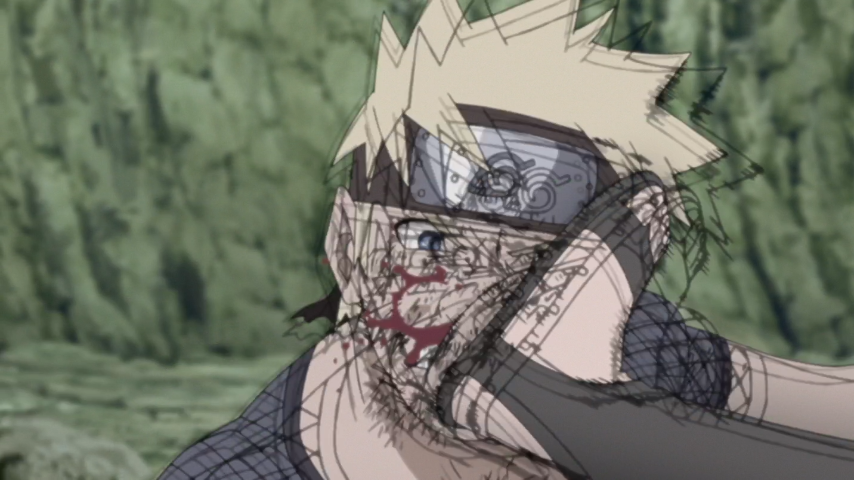
To mark the passage of time, both manga and anime cut away to a scene of Sakura and Kakashi standing by in idle trepidation as day turns to dusk. Upon returning to the arena, we’re given a proper look at the now-decapitated statues of Madara and Hashirama, with the long, downward PAN eventually revealing that their reincarnated selves are still fighting after all this time. The cut that follows single-handedly elevates the adaptation to a masterpiece level and still stands as Hiroyuki Yamashita’s greatest transformative effort with this series.
Sorrowful, adagio strings accompany the camera as it slowly tracks up over the course of an emotionally agonizing ninety seconds. The excessive length of the single cut demands attention in and of itself, but further contributing to its place as the centerpiece of the finale is Yamashita’s decision to rotoscope the characters. As we’ve seen before, his highly selective deployment of this technique is what makes it so impactful, though this is without a doubt his most ambitious endeavor on this front. To that end, a special call to Studio Orange was made [4] by none other than Norio Matsumoto himself. Orange is a studio with an extensive CGI and motion capture (mocap) background, which they’ve shown time and again through many well-produced hits such as Land of the Lustrous and Beastars. The former of these two series is where we find Norio Matsumoto’s connection to the studio, as he donated rough layouts for an incredible 200 cuts [6][7] of the eighth episode. The timeline on the exchange is less than clear though, so it is unknown if Norio handled this volume on Land of the Lustrous as a return favor for their help on NARUTO, or if he was already offering his assistance at Orange and thought to do his protegee a favor by extending the NARUTO opportunity. In any event, this miniature field trip saw Matsumoto invite a few of his close circle of friends – the aforementioned Erkin Kawabata, Katsuhiko Kitada and Arifumi Imai – and together they recorded the live action reference for Naruto and Sasuke.
Obtaining the reference is only half the battle, though, as an animator must then painstakingly draw over every single frame of the captured footage so that it instead reflects the yellow-haired ninja and his black-haired friend. For this gargantuan effort, the production once again turned to a product of the studio: Eri Taguchi. This was her key animation debut even, as she previously spent the last three years supplying inbetweens with the odd clean-up job towards the end of her stint as a supporting artist. The art of rotoscoped animation is one that will inherently introduce a level of jitteriness. It’s more than possible to avoid this by selectively removing frames and cleaning poses in a way that looks and feels more natural to animation, but like we’ve seen in every instance of it prior, Yamashita wants the jitter. It’s an aspect that ends up playing right into his hands. As a result, Naruto and Sasuke’s fight degrades into a sloppy, drunken brawl as neither can muster enough strength to throw more than a weak punch or pathetic kick. The impression this single minute and a half cut leaves is something wholly impossible to portray in manga form, and is again some of the best adaptive work in the entire series.


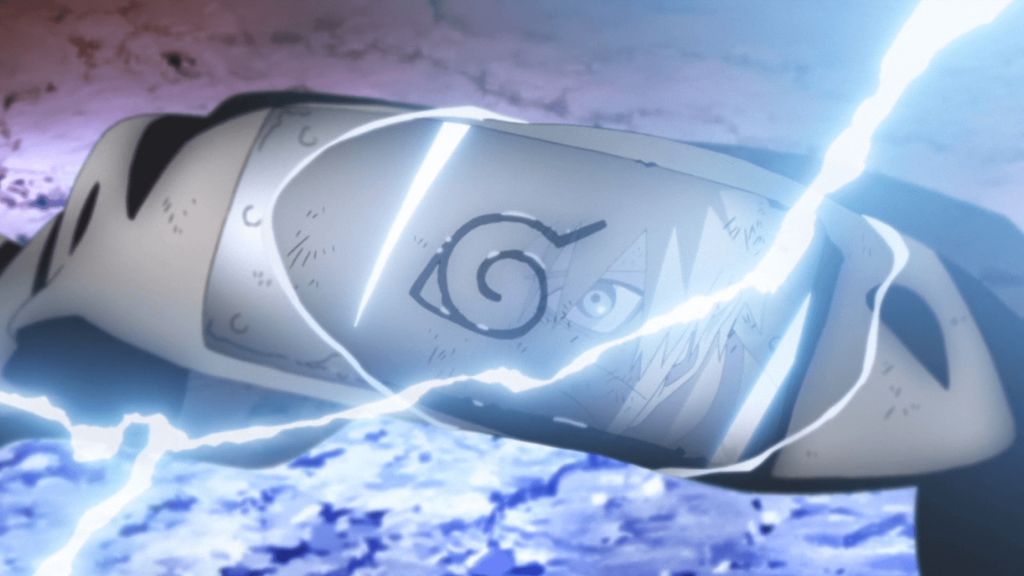
Rebuked for the seemingly hundredth time, Sasuke finally snaps, and it’s again something only the anime could have achieved. Emerging from a newly formed crater, his three-fold utterance of the word “nandomo” (lit. again) in the manga is instead turned into a long, drawn-out eight in the anime. At first, this may not seem like a huge difference, but it’s done with such purposeful intention and spewed so toxically by actor Noriaki Sugiyama that it’s one of the most memorable moments of the finale. Moreover, there is a historical connection woven into the direction here, and one that spans quite a confusing web of characters, so please bear with me. Toshiyuki Tsuru, mentor to Hiroyuki Yamashita, directed the revolutionary thirteenth episode of Kaze no Yojimbo (2001), during which the black-haired antagonist similarly has a certified capital “M” moment and drops exactly eight repetitions of “nandomo” during his breakdown. With this much information alone, it would seem conclusive that Yamashita is taking a page from his mentor’s book, only fifteen years later. That seemingly sound logic falls under suspicion, however, since the production assistant of Kaze no Yojimbo #13 and the script writer of NARUTO: Shippuuden #477 are the same person: Yuka Miyata. To go from one of the lowest-ranking (yet supremely essential) roles in the production to penning entire episodes is extremely rare, but one way or another, Miyata managed to do just that. She was the longest-tenured script writer for NARUTO, having been part of the regular rotation from around the second year of the original series until the very episode this blog post is focused on, after which she moved on to write for Pokémon at OLM. As far as those with extensive knowledge of NARUTO’s continuity go, there are few more experienced, which is to say that her role in the final episode shouldn’t be taken for granted, as she would have worked closely with Yamashita to develop many of the original ideas found in the script (I neglected to mention the ghost of Neji appearing at the start of the two-parter until now). The ultimate consequence of this multi-threaded overlap is that the exact inspirations and masterminds behind some of the more inspired developments may never be known, but their legacy lives on regardless.
With nothing left to cover but the decisive final clash, Yamashita again turns to two of his most trusted allies: Chengxi Huang and Naoki Kobayashi. Fresh off the heels of his 18th opening, the motif of incorporating many of the significant side-characters through overlapping layers was clearly fresh in his mind. Here, it would manifest in their hands metaphorically lending power to Naruto’s rasengan, meanwhile Sasuke’s chidori is only supported by his brother, Itachi. It’s yet another way the anime elevates the manga by lending relevance to all the bonds Naruto worked to develop.
In an interesting reversal of roles, Toshiyuki Tsuru was tasked with the subsequent episode, expanding on the aftermath of their collision and bookending the adaptation in the process. He had already long since relinquished the torch to the younger generation, but to receive an effort like #478 so late into his career shows how much NARUTO meant to him. Series director Hayato Date would then resign shortly after, leaving fifteen years of dedication to Masashi Kishimoto’s manga behind him. A few months worth of light novel adaptations, each helmed by a different director, bridged the gap to the even five hundred episodes at which NARUTO: Shippuuden was finally laid to rest.
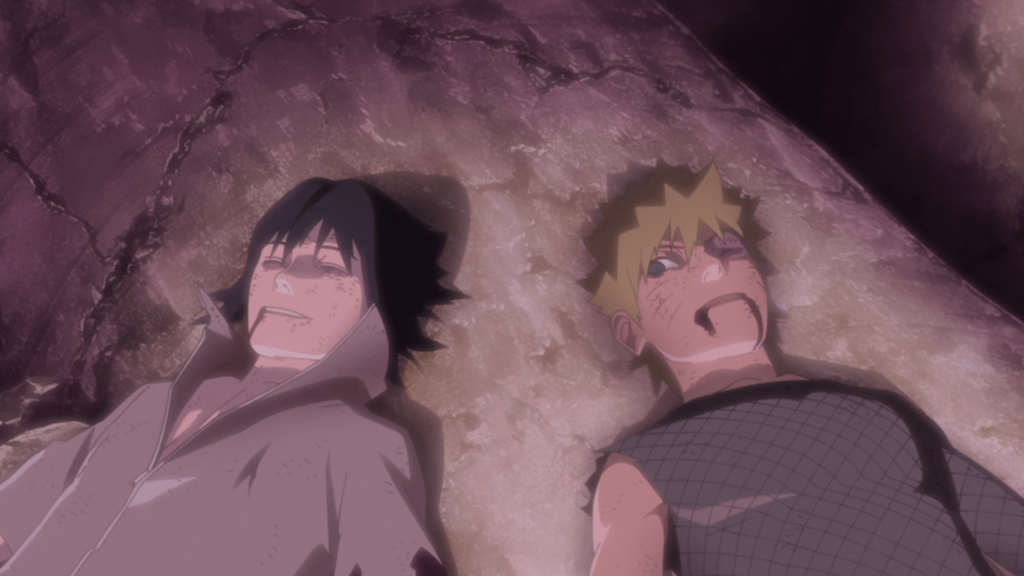
When approaching the direction of Naruto vs. Sasuke, it would have been really easy for Hiroyuki Yamashita to stick close to their original meeting at the Valley of the End. To use it as a crutch, constantly referring back to nostalgia-inducing moments. The parallels between the two are so strong that it is practically asking for it, and most fans would have probably appreciated it all the same. Hiroyuki Yamashita purposefully avoided this, though. Designing his own original action, setting his own pace, and then personally leading that vision to a series-defining event. As a result, NARUTO fans have two creatively distinct finales to appreciate: Atsushi Wakabayashi and Norio Matsumoto’s industry-defining animation spectacle and Hiroyuki Yamashita’s more theatrical, character-driven piece.
The wait was also well worth it. To say nothing of the quality of the filler found throughout the year prior to the finale, this was something anticipated for far longer than it should have. Expectations are not necessarily something that is present in every director’s mind, but Yamashita would have known whose act he was following and exactly what NARUTO #133 means to so many people, growing up as one of them himself. As a send-off, few franchises are able to end on such a strong note, and fewer still in the hands of the very same artists who were responsible for helping to establish the identity of the anime as many as fifteen years prior, in the case of Toshiyuki Tsuru, and just short of ten for Yamashita. This retention speaks first and foremost to dedicated producers like Naoji Hounokidani and directors like Hayato Date, but it would be irresponsible to not attribute a significant amount to the inexplicable connection NARUTO, as a series, is able to create with its fans.
While the series may have been able to rest, there was no time for the staff at Studio Pierrot. Shueisha and TV Tokyo deemed that the franchise would continue, but with Boruto as the protagonist instead. With the success of the movie, it is hard to imagine Hiroyuki Yamashita was anything other than the first choice to direct this new series. Though, as we’ll find out, it wasn’t without an entirely new set of challenges.
If you enjoyed this post, please consider supporting on ko-fi: here
Part 1 | Part 2 | Part 3 | < > | Part 5
References
- https://naruto-20th.jp/gallery/specialinterview-2/
- https://wavemotioncannon.com/2017/04/16/interview-with-naruto-animator-chengxi-huang-part-12/
- https://twitter.com/cekibeing/status/781553016465784832?s=20
- http://pierrot2.com/naruto/2016/10/03/%e3%83%a9%e3%82%b9%e3%83%88%e3%83%90%e3%83%88%e3%83%ab%e3%81%ae%e8%a3%8f%e8%a9%b1/
- https://twitter.com/cekibeing/status/831113194605142017?s=20
- https://twitter.com/takei_katsuhiro/status/936956850574016512?s=20
- https://twitter.com/waki_kiyotaka/status/936954813853581313?s=20
